As the old proverb states, necessity is the mother of invention, which means the need to solve a problem breeds ideas and solutions never thought of previously. In the automotive industry, this is how the vast majority of the companies we know and love were founded. Take, for example, Ferruccio Lamborghini. The Italian owner of a tractor manufacturing company wanted his own personalized Ferrari built in the early ‘60s, but unfortunately Enzo Ferrari only sold the cars he sold, and no matter the client there were no exceptions. So Lamborghini created his own Italian sportscar, birthed the Miura and built a marque which still exists today and builds some of the world’s great supercars.
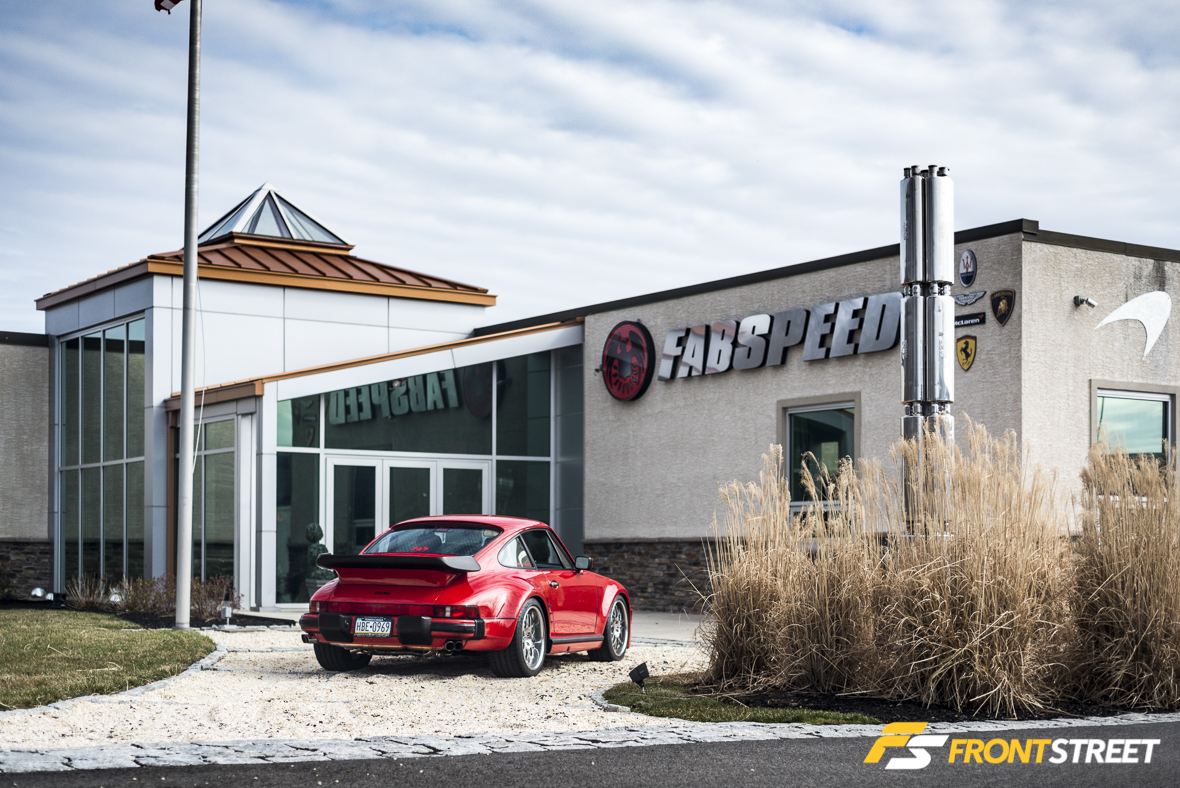
Similar to the legendary story of the Italian exotic car manufacturer, Fabspeed Motorsport was also created out of necessity. The story begins back in the mid-‘80s, when Fabspeed founder Joe Fabiani – a stock broker at the time – purchased his first Porsche, a 1985 911 Cabriolet. He began his quest for motorsports performance the way many do — by frequenting the local autocross courses. After scratching the surface of motorsport opportunity and feeling the need to improve his skills, he enrolled in a few sessions at Skip Barber Racing School. This led to more aggressive high performance driving events at larger tracks like Road Atlanta, Watkins Glen, and many others.
By 1994, Fabiani had exhausted his use of street cars on racetracks and decided he would need a dedicated track car, which brings his 1995 Porsche Carrera (993-chassis) into the picture. Immediately upon purchasing the car, it was modified to strengthen its presence on the racetrack. This involved a full RSR Clubsport conversion, but when Fabiani went looking for a quality exhaust system for his project, he was unhappy with the options on the market. The solution? Fabiani set out to create his own exhaust system.

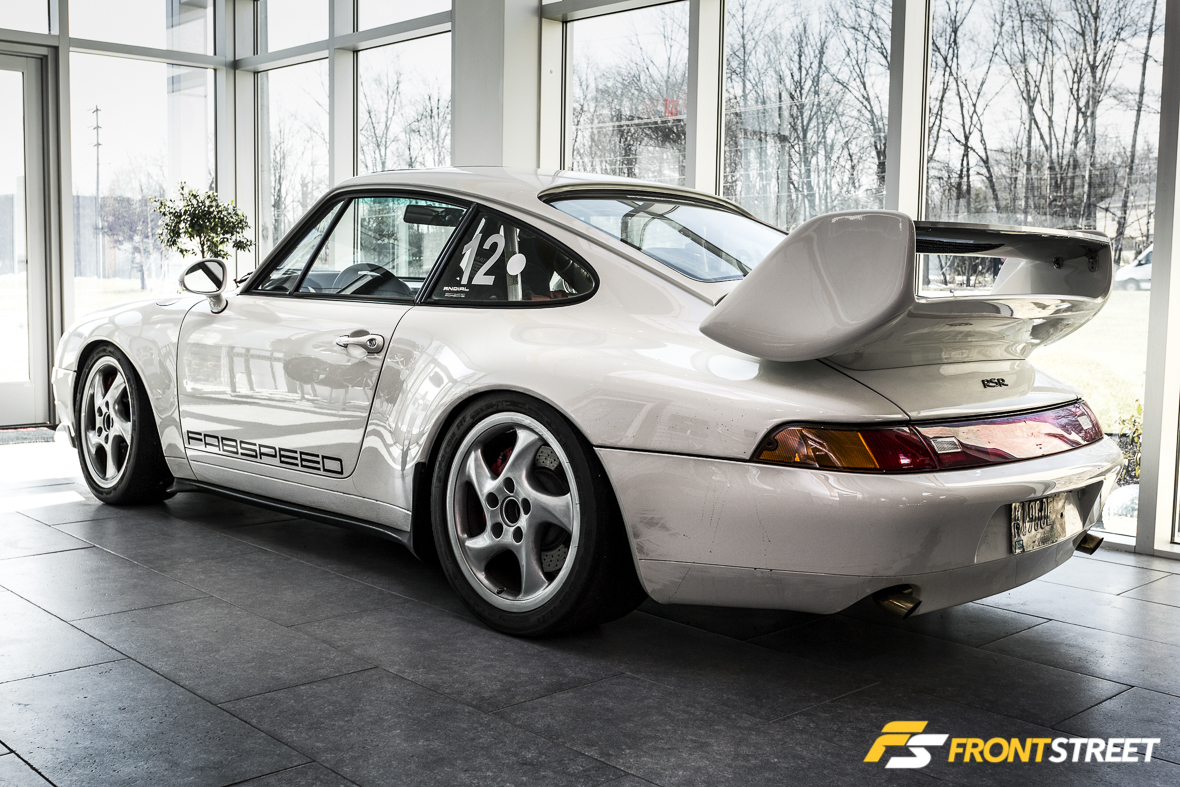
Between the quick movement of the spoken word and Fabiani’s performance at the track with his newly reborn Porsche, it didn’t take long for other 911 owners to want Fabiani’s same system. He then chose to leave his brokerage job, to focus solely on an entirely new endeavor – Fabspeed Motorsport. Fast-forward over twenty years, and the company is now right at home in its state-of-the-art bustling 26,000 sq-ft facility and showroom in Fort Washington, PA, where Fabiani and his team produces hundreds of different performance parts for numerous supercar applications including Ferrari, Lamborghini, Maserati, Bentley, McLaren, and others.



Fabspeed’s showroom grabbed my attention immediately after passing through the reflective glass doors. The visual cues explaining the aim of the business are evident all over the building; from the RSR Clubsport 993 that started it all; to the various ADV.1 wheels and Fabspeed exhaust systems in the entryway.
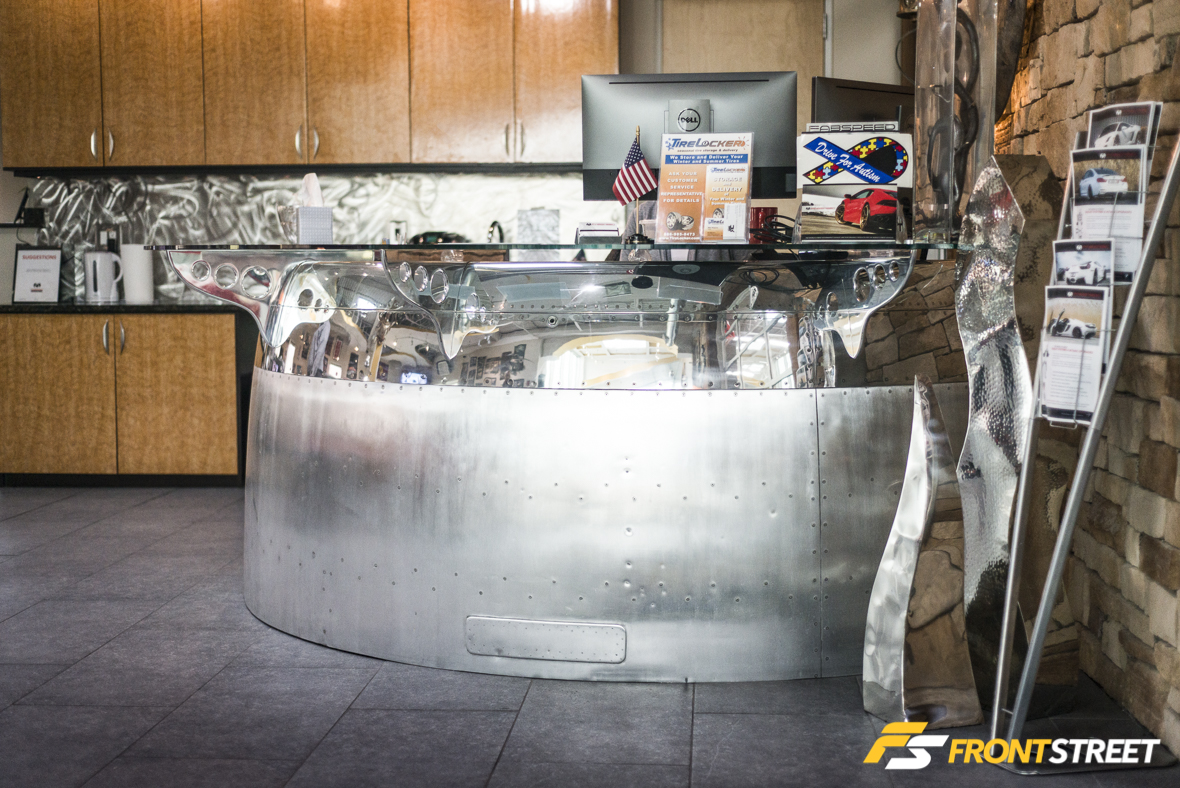
One thing that’s hard to miss is the concentration of art and miscellaneous metal works throughout their combination showroom and open office layout. The most predominant piece is the retired airplane turbine engine housing being used as the receptionist desk. Perfect recycling of older parts that have ‘exhausted’ their original use… See what I did there?


As my route through their office continued, I came upon a Porsche 911 Turbo engine mounted upside-down on a stand displaying one of the company’s exhaust options with heat exchangers.


Located front-and-center in their showroom was the candidate for the above system. A beautiful original ‘505 option’ Slant Nose 930 Porsche Turbo, with a completely rebuilt engine, 964 cams, Borg Warner K27 turbocharger, and an abundance of Fabspeed pieces including headers, full exhaust and long-neck intercooler. I had the opportunity to see this car outside afterward, and it does not disappoint in the performance section.
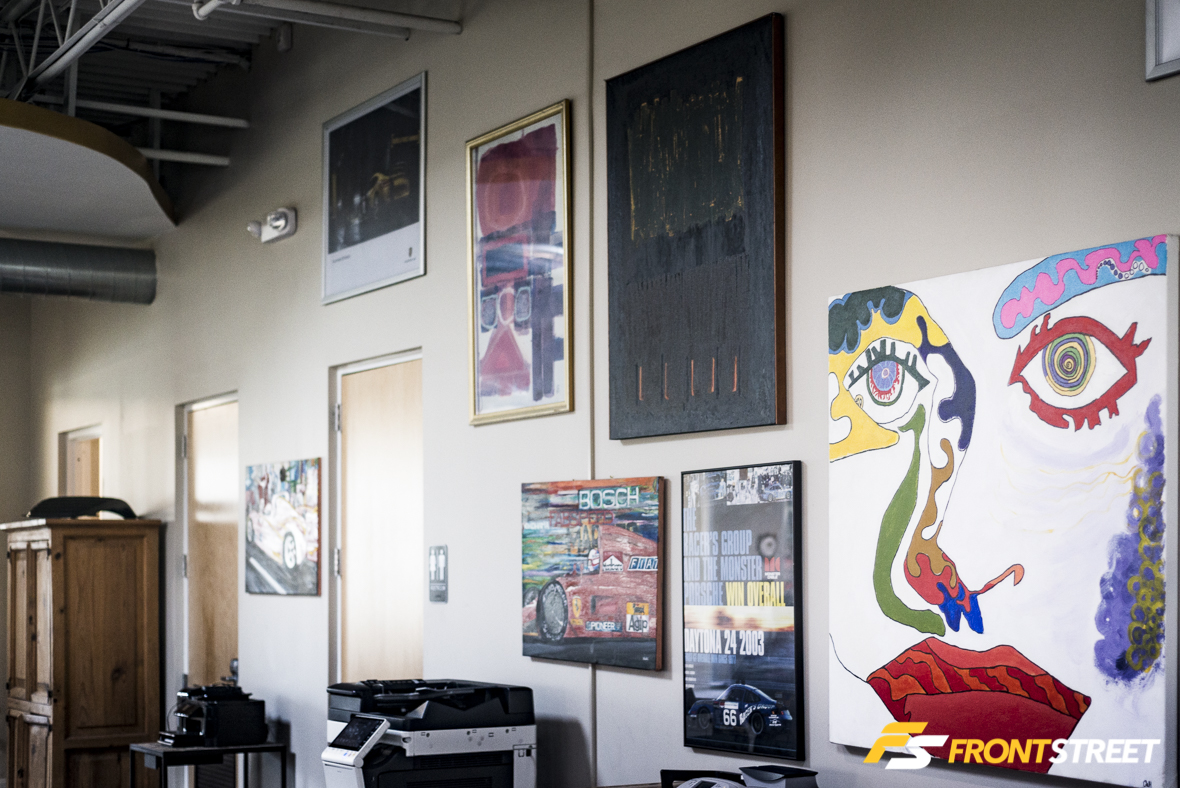

Positioned in the corner of their showroom is a comfortable lounge area where customers can catch up on their favorite automotive television program, relax by a fireplace, or just admire more exhaust displays.
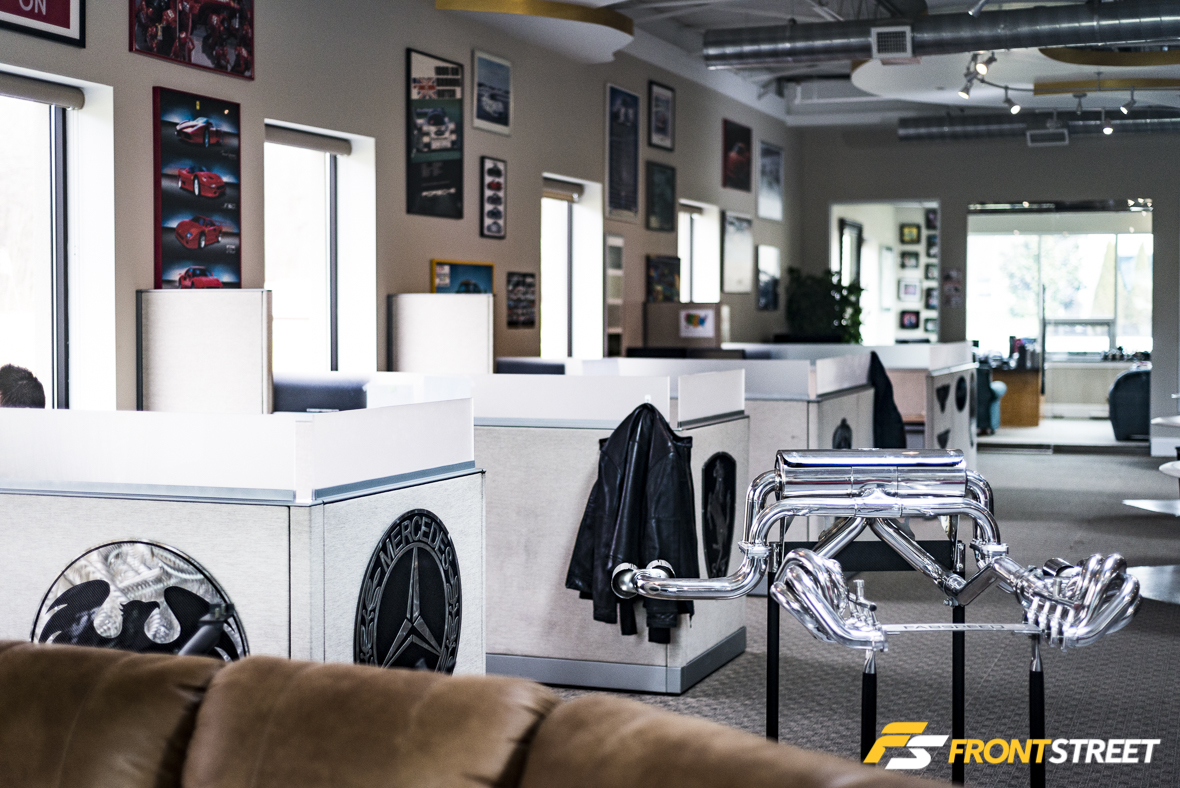


The company’s open office situated amidst the customer showroom contains cubicles inhabited by automotive specialists emblazoned with carbon representations of various exotic automobile manufacturers’ logos. These automotive professionals handle everything to keep the administrative side of the business running including customer support, sales and marketing, and even managing the company’s operations, yet they are easily accessible.


It’s very easy to get distracted by outlying factors while inside their showroom; perhaps that’s due to the glass garage door giving a glimpse into the shop area where the manufacturing magic happens. Although its contents are constantly changing, the bays are always packed with exotic automotive treasures.



Once inside their spotless shop area, I had the chance to analyze some incredible supercars. In this case, a Volcano Yellow McLaren MP4-12C had received a 675LT-style exhaust makeover from Fabspeed. Normally the factory 12C exhaust tip contours inside a unique polygonal shape; to cater to various customer preferences, Fabspeed’s exhaust systems are offered with the OEM style tip, a quad-outlet style tip, or the variant pictured here: the 675LT-style tip. My favorite of the bunch, this tip combines protruding tubing out the rear of the car for an aggressive look, yet seamlessly matches the classy OEM rear grill styling using waterjet cut aluminum garnishes designed and manufactured in-house.


Looking past the waiting exotics into the manufacturing area, I could make out the angered demeanor of a new Porsche Cayman GT4 resting atop a lift. This turned out to be the company’s prototyping area, where measurements are obtained on some of the world’s fastest supercars in order to produce a completely-redesigned better-flowing exhaust system from scratch.



This GT4 was being treated to a new set of headers and full exhaust system.
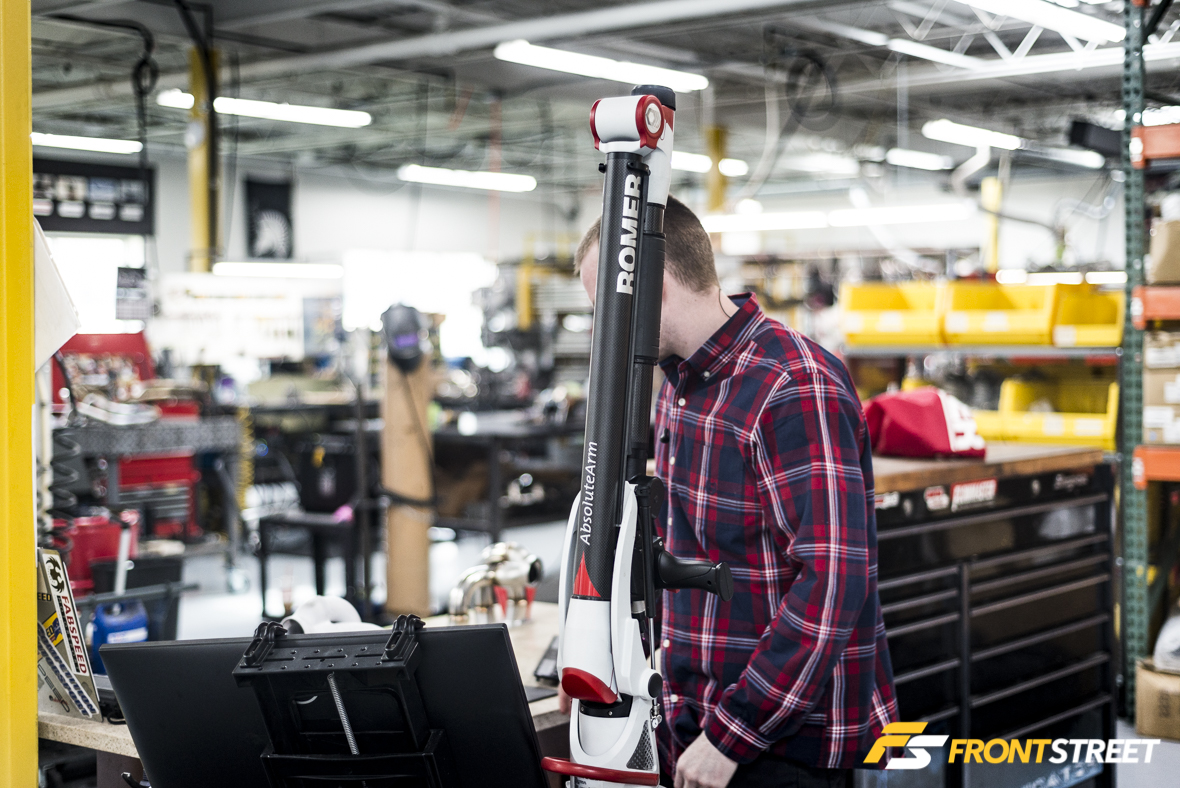


Using a ROMER AbsoluteArm, their engineers are able to skillfully scan any area of a vehicle, part of a header, or other exhaust component in three dimensions. This helps them to digitally recreate the exact proportions of an exhaust system in their computer modeling program so it can be modified and reformed into a product which is more aesthetically-pleasing, and better-performing when installed onto the vehicle. Processing the massive amounts of data produced by this scanner is handled by a PC which has been custom-built to specifically handle this process.




The next stop on my tour was their bread and butter, the fabrication and machining area. Greeting me was a combination of tubing pieces being welded together to create Fabspeed’s own collectors, however they have also begun using Burns Stainless collector pieces as another alternative for select applications.



Surrounding this area was a series of shelves full of their numerous welding jigs. Approximately 400 jigs have been constructed to offer the perfect outline for their fabrication team to produce perfect fitting header and exhaust solutions every time.



The team at Fabspeed even fabricates and laser etches all of its own jigs in-house. It’s not every day a company can produce nearly every aspect of their production line from start to finish.

Here the .065-inchthick US-sourced T304L raw stainless steel material is stacked and organized for future use in the construction of one of their applications.


From there a Unison Limited Breeze all-electric mandrel tube bender perfectly distresses and contorts the tubing into the specified bends without sacrificing valuable volume inside the piece.



Whether they’re creating a large number of various bends that can be trimmed down and put into production inventory, or specifically designing a single custom bent piece, this machine handles the bending process with ease.

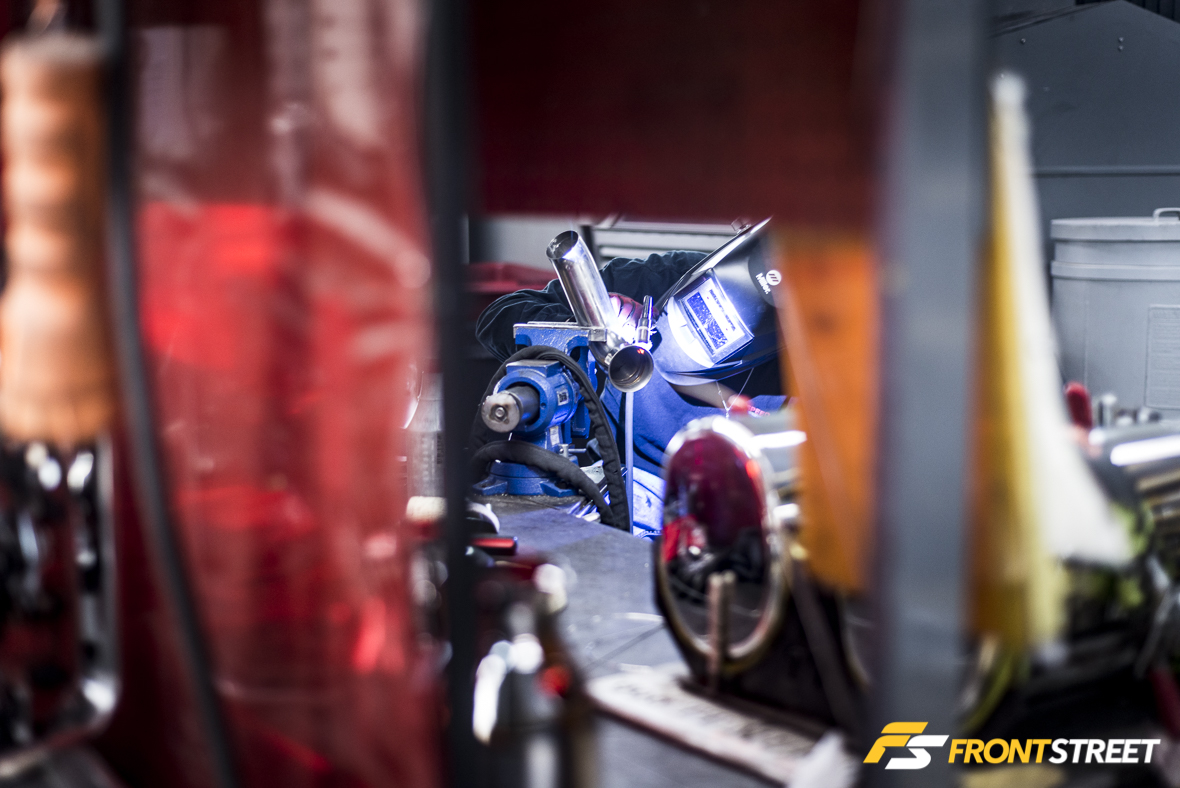

The bent and trimmed tubing finds its way into one of fifteen fabrication stations in the building, where a trained fabrication expert uses Fabspeed’s own custom-made jigs to seamlessly TIG-weld one of their high-quality exhausts together with the exact intended dimensions for a perfect fitting solution.

Their creation of product doesn’t end with the bent and welded piping, as large machinery is used elsewhere in the manufacturing process.
“We utilize two HAAS CNC machines: a VF-2 vertical CNC mill and an ST-20 CNC Turning Center. These sister systems create our custom flanges; countersinking, drilling, and milling within .010-inch tolerance for a leak-free seal. It may be more cost effective to purchase pre-made flanges, but we prefer to maintain full control over the components we produce with the ability to make alterations at a moment’s notice,” said Mike Spock, their Marketing Manager (and my tour guide).

“Ferrari 458 header flanges, M3/M4 two-bolt exhaust flanges, tow hook shafts and rings, Ferrari 355 Cat-bypass flanges, and license plate brackets are all made with both CNC machines,” he says.



Other machinery like this gigantic Bystronic Xpert 150 Press Brake is involved with bending some of the smaller aspects of the systems such as trim pieces, mounting locations, or larger Fabspeed badging.


These details are first cut in the company’s large Flow WaterJet cutter. Using an extremely high-pressure jet of water, this tool is capable of cutting various widths and sizes of metals into predetermined patterns, designs, or shapes.


Finished details all make a stop in this staging area, where each part can be verified for fitment and finish to ensure each product meets the company’s strict quality standards, before being moved into inventory bins.



Aside from the massive manufacturing aspect of the business, Fabspeed also offers everything from installs and detailing, to vinyl wrapping, and even dyno tuning on the company’s DynoJet for their customers.


This white Ferrari F430 Convertible — a customer car — already had a set of Fabspeed Sport headers installed previously, but returned to the shop for a Supersport X-Pipe exhaust system install.


Elsewhere in the building, Fabspeed’s seemingly endless inventory and shipping department quickly fills up the remaining space inside. They are constantly producing, restocking, and shipping parts out of this location, whether to individual customers, or to retail locations that sell their product on an equally-large scale.



Our final stop on the tour brought us to their research and development department, where their team of engineers digitally (and sometimes manually) calculate all of the dimensions for product creation. This is where the 3D scans are modeled, and passed through the 3D printer for a quick, and cost-efficient alternative to ensuring fitment at the earliest stages of development.


Stored away in the back of their 3D printer room, are some outsourced gems that help Fabspeed produce the highest quality product they can. Among them are a large lot of Helical valves, used in their 991 GT3/GT3 RS/911 R track solutions, these valves are used by Porsche themselves and offer unprecedented quality.


The other are German-imported HJS Catalytic Converters, who in conjunction with the FIA developed a catalyst concept for motorsport and street performance driving. Needless to say, these are top of the line solutions for high-flow catalysts, and Fabspeed is the exclusive US distributor.



Exiting out the back of the building, I was bid farewell from the premises by the gorgeous 930 Turbo seen earlier in the tour. I left with a much greater understanding of the exotic performance industry, and can see why so many people have trusted Fabspeed products on their vehicles. Whether it’s treating their customers to a relaxed lounge atmosphere, worry-free installs, enhancing dyno tuning, or outstanding product support for such a wide range of vehicles, Fabspeed Motorsport is destined to be around for a long time as they continue to perfect supercar performance.










